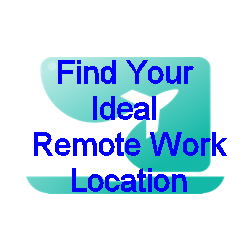Dying remote is not a term I expect to catch on like working remote. But I felt the need to write about it because when you are faced with someone at the end of their life, you might see the similarities. Before about 300 years ago most things we did were remote. Education, work, medicine, and even death. Slowly we created places you had to go to learn, work, receive medical services, and of course die. These have become so ingrained in our culture, that to try and do otherwise is challenging to say the least. We’ve all seen the establishment push back on remote work. I’ve been reminded of that a lot in the last week.
The Original Remote Worker
Most children in the last hundred years grew up waiting for their father to come home from work. This has been passed down as a norm for several generations. In my case, my dad was a farmer. It was more a matter of him waiting for us to come home from school. Work for us was all around us, all the time. He did what he needed to do when he needed to do it. There were no punch clocks. You did different things at different times of the year because it was necessary. Work was decidedly asynchronous but as long as the cows were fed, milked, etc. all was good. It was my first taste of remote work. But not knowing any better, we just called it work.
Fast forward half a century and the cows and most of the farm are gone. There are some goats to keep it agricultural, but they are largely lawn ornaments that need to be fed. One of our neighbors used to tell a story about my dad holding up the front of his tractor for him when he needed to change the tire. It sort of paints a picture of my dad in his prime. Today he needs help with just about everything. Once you pass age 90, most parts aren’t covered by the warranty anymore. So when they break, that’s pretty much it. Luckily the mind is still good, but the rest is fading fast. Not bad for someone who has been struck by lightning seven times. Yes, I said seven.
Since we have ruled out cancer, car crashes, industrial accidents, being shot by a jealous lover, and lightning as a potential cause of death we are narrowing in on natural causes. At 93, that can cover just about anything. As someone who has always lived on his terms, closing out his days in the house he built seems only natural. Unfortunately, we have put so much structure in place as a society, that this is not only not the norm. It can be very difficult to do.
Need vs Requirement
Somewhere in the later part of the 20th century, many of our needs became requirements. The evolution of the school, the office, and the hospital all centered around the need to provide a product or service efficiently. Centralizing the teacher, manager, or doctor made things more efficient. It was the factory of Henry Ford’s dreams in different forms. The structure however was largely based on limits in communications. Most of these went away during the past 10 years, but the structures remained in place.
When my children were little, we traveled extensively. Pompei and the pyramids in Giza weren’t just things they read about in school. They had been there. And we generally did it during the school year. Both were good students and they still got their work done. That was until the state made an attendance requirement. You could have a 4.0-grade point average, but if you weren’t in school the proper number of days, you had to repeat the year. The speaker at my daughter’s graduation spent several minutes condemning the law. Given a choice between reading about a place in a book and going there, I would always prefer to have the choice.
Rules and Regulations
Mandates to return to work generally haven’t been legislated yet, but for some people, the penalties for non-compliance exist. We know people can work from home, it saves everyone money, and it’s what many people want. But there is still pushback. Surprisingly, dying is the same way. Globally, 53.4% of people die at home. In higher-income countries, this number drops dramatically to 27.3% because infrastructure, common practices, and rules and regulations have made the hospital not just a need, but a requirement. Thanks to Hospice programs, the number of people dying at home in the United States grew by almost 30% from 2003 to 2017.
Still not everyone gets it, and it doesn’t happen automatically. We have spent a ridiculous amount of time checking with hospital administrators, doctors, ambulance staff, funeral directors, and police. There are forms to be filled out, approvals, and signatures needed, otherwise, someone can end up in jail. Having to go through the bureaucracy of getting the right people to fill out forms is also not a lot of fun.
Much like working remote, dying remote should be easier. I understand why there are safeguards in place, but this is what people did for millions of years. In the last couple of years, we have learned a lot about what is possible for remote education, work, and medicine. We have learned we can have choices in where we work and where we live. Perhaps we need to relearn how to die, as we rediscover how to live.



